Scientific name Concavenator Rank Genus | Phylum Chordata Higher classification Carcharodontosauridae | |
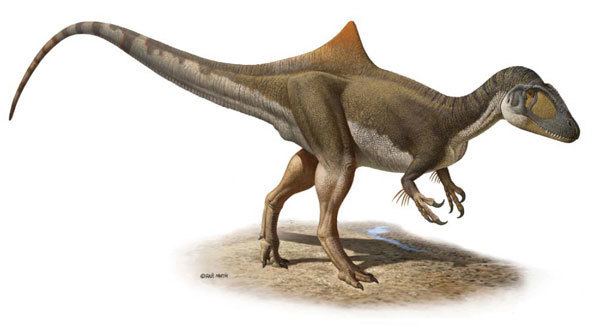 | ||
Similar Dinosaur, Theropods, Carcharodontosauridae, Acrocanthosaurus, Neovenator | ||
Dinosaur simulator ca ando stegosaurus concavenator roblox 34 gameplay pt br
Concavenator is a genus of theropod dinosaur that lived approximately 130 million years ago during the early Cretaceous period (Barremian stage). The type species is C. corcovatus; Concavenator corcovatus means "hump backed hunter from Cuenca". The fossil was discovered in the Las Hoyas fossil site of Spain by paleontologists José Luis Sanz, Francisco Ortega and Fernando Escaso from the Autonomous University of Madrid and the National University of Distance Learning.
Contents
- Dinosaur simulator ca ando stegosaurus concavenator roblox 34 gameplay pt br
- Concavenator dinosaur of the day
- DescriptionEdit
- Feathers and scalesEdit
- ClassificationEdit
- References
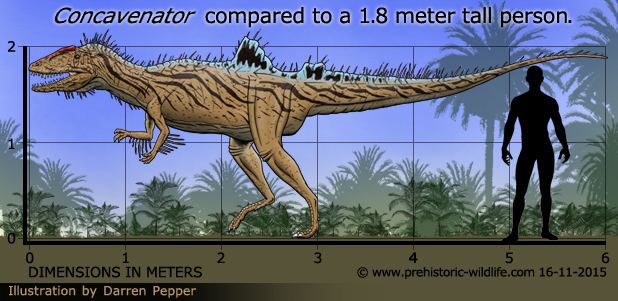
Concavenator dinosaur of the day
DescriptionEdit
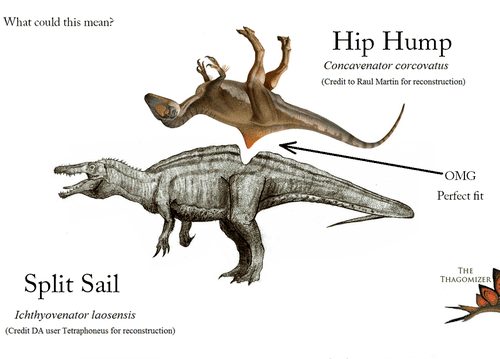
Concavenator was a medium-sized (roughly 6 meters (20 feet) long) primitive carcharodontosaurian dinosaur possessing several unique features. Two extremely tall vertebrae in front of the hips formed a tall but narrow and pointed crest (possibly supporting a hump) on the dinosaur's back. The function of such crests is currently unknown. Paleontologist Roger Benson from Cambridge University speculated that one possibility is that "it is analogous to head-crests used in visual displays", but the Spanish scientists who discovered it noted it could also be a thermal regulator.
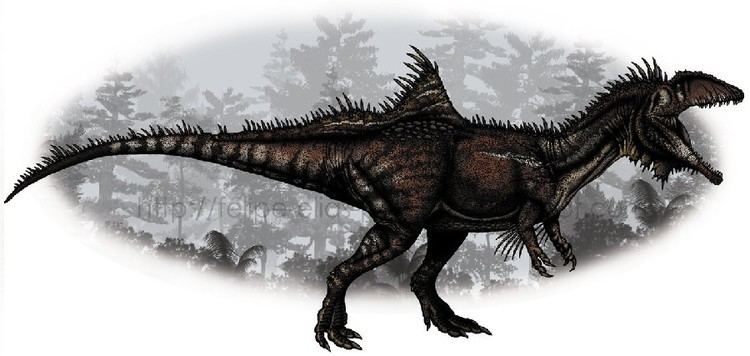
Additionally, the forelimb (ulna) of Concavenator preserved evidence of what may be quill knobs or homologous structures, an anatomical feature so far known only in animals with large, quilled feathers on the forelimb.
Feathers and scalesEdit
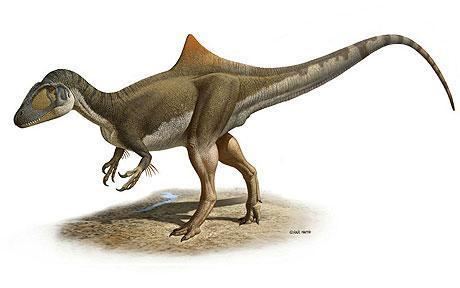
Concavenator had structures resembling quill knobs on its forearm, a feature known only in birds and other feathered theropods, such as Velociraptor. Quill knobs are created by ligaments which attach to the feather follicle, and since scales do not form from follicles, the authors ruled out the possibility that they could indicate the presence of long display scales on the arm. Instead, the knobs have been thought to probably anchor simple, hollow, quill-like structures. Such structures are known both in coelurosaurs such as Dilong and in some ornithischians like Tianyulong and Psittacosaurus. If the ornithischian quills are homologous with bird feathers, their presence in an allosauroid like Concavenator would be expected. However, if ornithischian quills are not related to feathers, the presence of these structures in Concavenator would show that feathers had begun to appear in earlier, more primitive forms than coelurosaurs. Feathers or related structures would then likely be present in the first members of the clade Neotetanurae, which lived in the Middle Jurassic. No impressions of any kind of integument were found near the arm, although extensive scale impressions were preserved on other portions of the body, including broad, rectangular scales on the underside of the tail, bird-like scutes on the feet, and plantar pads on the undersides of the feet.
Some amount of skepticism has been raised among experts on the validity of the interpretation that the ulnar bumps represent quill knobs. Darren Naish, of the blog Tetrapod Zoology, speculated that the bumps would have been unusually far up and irregularly spaced for quill knobs. He additionally pointed out that many animals have similar structures along intermuscular lines that act as tendon attachment points among other things. This interpretation was supported by Christian Foth and others in 2014.
The hypothesis that the bumps along the ulna represented muscular insertion points or ridges was subsequently examined, and the results presented, at the 2015 meeting of the Society of Vertebrate Paleontology. Elana Cuesta, along with two of the researchers who initially described Concavenator (Ortega and Sanz), attempted to reconstruct its forearm musculature to determine if the ulnar bumps would be explained as an inter-muscular ridge. They identified the insertion point for the major arm muscles, and determined that the row of bumps could not have been located between any of them. They found that the only possibility was that the bumps could be an attachment scar for the M. anconeus muscle, which is unlikely, because this muscle normally attaches to a smooth surface without marks or bumps on the underlying bone, and argued that the most likely explanation for the bumps was their initial interpretation as feather quill knobs. The authors admitted that it was unusual for quill knobs to form along the posterolateral surface of the bone, but also noted that the same arrangement is found in some modern birds, like the Moorhen.
Some paleontologists have expressed not being convinced by the conclusions of Cuesta, Ortega and Sanz. Mickey Mortimer pointed out the ulnar bumps appear to actually be on the anterolateral surface of the bone, rather than the posterolateral as Cuesta et al. claimed, and that crocodilians are a better reference than birds for reconstructing the muscles of Concavenator and other non-maniraptoran theropods. Mortimer maintained the ulnar bumps are most likely part of an intermuscular line. Andrea Cau compared the forearm of Concavenator to the articulated forearms of Allosaurus and Acrocanthosaurus and showed that this Concavenator specimen's forearm is dislocated and the ulnar bumps are on the anterior surface of the ulna and not the posterolateral surface. He pointed out this means that due to not being on the same part of the ulna, the ulnar bumps are not homologous to the quill knobs of paravians as claimed in both the original 2010 description of Concavenator and the 2015 results by Cuesta et al. Cau argued there are also other things that contradict the hypothesis that the ulnar bumps are quill knobs: the ulnar bumps of Concavenator are connected by a crest on the bone while paravian quill knobs are separate from each other, and the ulnar bumps of Concavenator are irregularly spaced while paravian quill knobs are uniformly spaced. Cau added that phylogenetics also make it unlikely an allosauroid like Concavenator would have quill knobs. He concluded that his interpretation was the ulnar bumps were part of the crest on the anterior side of the ulna perhaps for insertion of the musculature that connected the ulna and radius, pointing out that Balaur has a crest on the anterior side of its ulna which is homologous with that of Concavenator and has no relation with remiges.
ClassificationEdit
The following cladogram after Novas et al., 2013, shows it's within Carcharodontosauridae.
